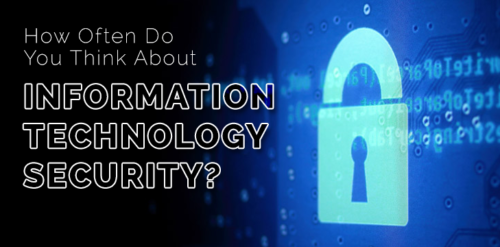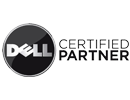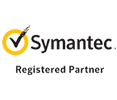How Often Do You Think About Information Technology Security?
Posted on August 12, 2016 in IT Security
 Many people and businesses think their systems and information are protected, but are they really?
Many people and businesses think their systems and information are protected, but are they really?
In today’s connected environment you need to routinely assess the security risks to your network systems, computers, users and the information stored on your systems to ensure you have sufficient safeguards in place.
Let’s discuss some of the basic safeguards your business should have in place to protect your technology resources, users and information.
Firewalls
Firewalls are designed to protect your network systems and computers by monitoring and controlling inbound and outbound traffic based on predefined rules. They come in a variety forms (appliances, software, etc) and different capabilities. Some firewalls provide content/internet filtering capability designed to restrict or control the content a user is authorized to access. The rules configured on a firewall are generally adjusted to reflect business operation requirements and a business’ philosophy on acceptable content. Since intrusion and attacks methods are constantly changing you need to make sure you are routinely reviewing and updating your firewall settings, firmware and software. Failure to regularly review and update this first line of defense could expose your technology resources, users and information to attack or intruders and create an unsolicited security incident that could be damaging to your business and its reputation.
Anti-virus software
Anti-virus software sometimes known as anti-malware software, is computer software designed to prevent, detect and remove malicious software. Current anti-virus software can protect computers from such things as: trojan horses, worms, adware, spyware, backdoors and browser hijackers. Some more advanced software and other third party products can detect and remediate ransomware, rootkits and malicious browser helper objects. Since malicious software and its method of delivery seem to change daily you need to make sure your anti-virus software is constantly being updated to ensure your systems, computers and users are adequately safeguarded. Failure to constantly update this line of defense could adversely affect your business operations, impact users’ efficiency and productivity and/or unknowingly disclose sensitive information from your systems. Unsolicited security incidents such as these can be costly to your business. Locked or deleted information can be difficult to restore or costly to reproduce. The disclosure of sensitive information can have numerous ramifications ranging from the time and costs involved with analyzing how the disclosure happened and what information was disclosed to possible credit monitoring costs for anyone impacted by the disclosure and costs related to legal representation.
Security Patching
A security patch is a change applied to a technology asset, albeit hardware or software, to remediate an identified vulnerability or security weakness. A patch of this type is issued by the hardware or software vendor to prevent the successful exploitation of an identified vulnerability and to remove or mitigate the specific weakness. Since security patches can be released by hardware and software vendors at any time it is imperative that these be tested and applied as soon as possible after release since once a vulnerability or security weakness is identified hackers attempt to exploit those vulnerabilities to gain access to effected technology resources.
Human factor
First and foremost, information technology security is everyone’s responsibility. This includes anyone that has access to your technology resources and information. It should include not only employees, but contractors, vendors, consultants and cloud providers of services. Your business should have a written acceptable use policy that clearly defines acceptable and unacceptable use of your technology resources. It should address areas like password requirements, prohibiting the installation of unauthorized software, accessing personal email, occasional personal use, locking or logging off a computer before leaving an area or leaving for the evening, accessing or using cloud storage services, etc. It should be routinely reviewed and updated no less then annually. The policy should be provided to and personally acknowledged by all users of your information technology resources. An enforcement and sanctions provision should be a part of your policy so users are informed of the ramifications for non-compliance. All users should be routinely educated on the code of conduct they are to follow while using your business’ technology resources. There should be a designated point of contact for security related questions and the reporting of all security related incidents. All users of your technology resources should be educated on the process for reporting security incidents however trivial the incident may appear.
The longer you wait to assess your information technology security position and address weaknesses, the more likely it is to become a problem. If you would like some guidance or assistance with assessing your information technology security position, please contact us.











